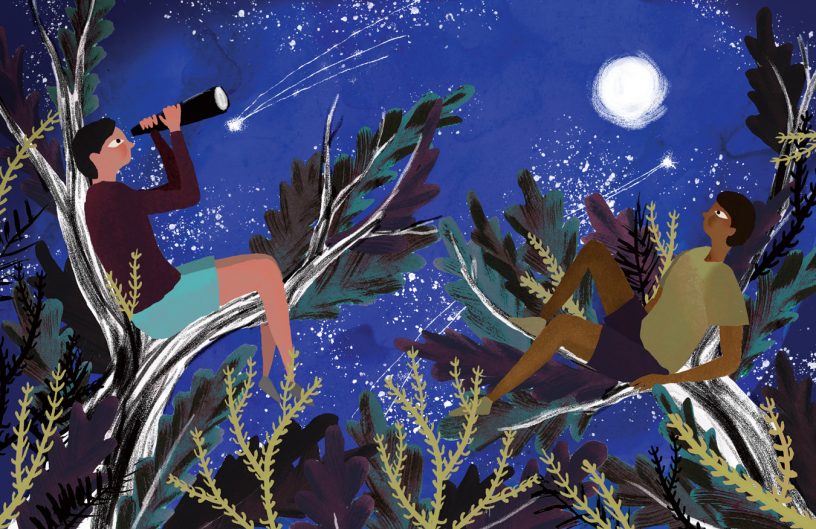“From out there on the moon, international politics look so petty. You want to grab a politician by the scruff of the neck and drag him a quarter of a million miles out and say, ‘Look at that, you son of a bitch.’”
—Edgar Mitchell, astronaut on Apollo 14
Mitchell’s lunar manifesto is one of the favourite quotes of Aidan Wright, an aspiring astrophysicist and first-year physics student at Simon Fraser University (SFU). Wright is one of the many enthusiastic volunteers at the university’s regular Starry Nights events: late night sky-watching sessions on top of Burnaby Mountain, where science and philosophy collide as experts, novices, and the merely curious gather to gaze in awe at the majesty of the universe. Held in the cozy surroundings of SFU’s Trottier Observatory and Science Plaza, and bolstered by a platoon of amateur astronomers armed with telescopes, Starry Nights provides an opportunity for visitors to have their minds gently blown.
Suitably inspired, Wright’s conversation takes giant leaps, flying from the microscopic to deep space, simultaneously straddling philosophy (science’s ability to explain how but not why things happen) and theoretical physics (what is dark matter, anyway?).
This journey into unplanned intellectualism is one of the reasons SFU physics professor Dr. Howard Trottier created Starry Nights. “For me, this is personal,” he explains. “In Grade 7, one of my summer camp counsellors took a bunch of the nerdiest kids out to look at the night sky. I could see the Milky Way arching over the horizon, and from then I was hooked. It knocked my socks off. We want to instill that interest in the world with kids and their parents now. Starry Nights started in 2007 when I started teaching an astronomy course and I wanted the students to see the night sky. I got a telescope from the department and began taking students out. It started with 20 or 30 people and grew into this.”
With no entry fee and no ticketing system, the events give anyone willing to queue up for a few minutes the opportunity to look through the observatory’s reflector telescope, viewing both the galaxy and the distant past (there are other smaller telescopes out on the plaza for viewing as well). Seeing the Orion Nebula as it appeared 1,300 years ago, for example, is nothing short of transcendent. “Astronomy is a visual medium,” explains Trottier. “With a telescope, there’s nobody between you and the stars. You can’t experience that and not be affected.”
Trottier says that there is a tendency for young people to be jaded, and that thinking about the earth after viewing the universe puts everything in context. “People think it diminishes the importance of human life, but it’s quite the reverse,” he continues. “This is the only planet we have. Seeing that from the other side is a very powerful experience.”
Browse our Community section.
